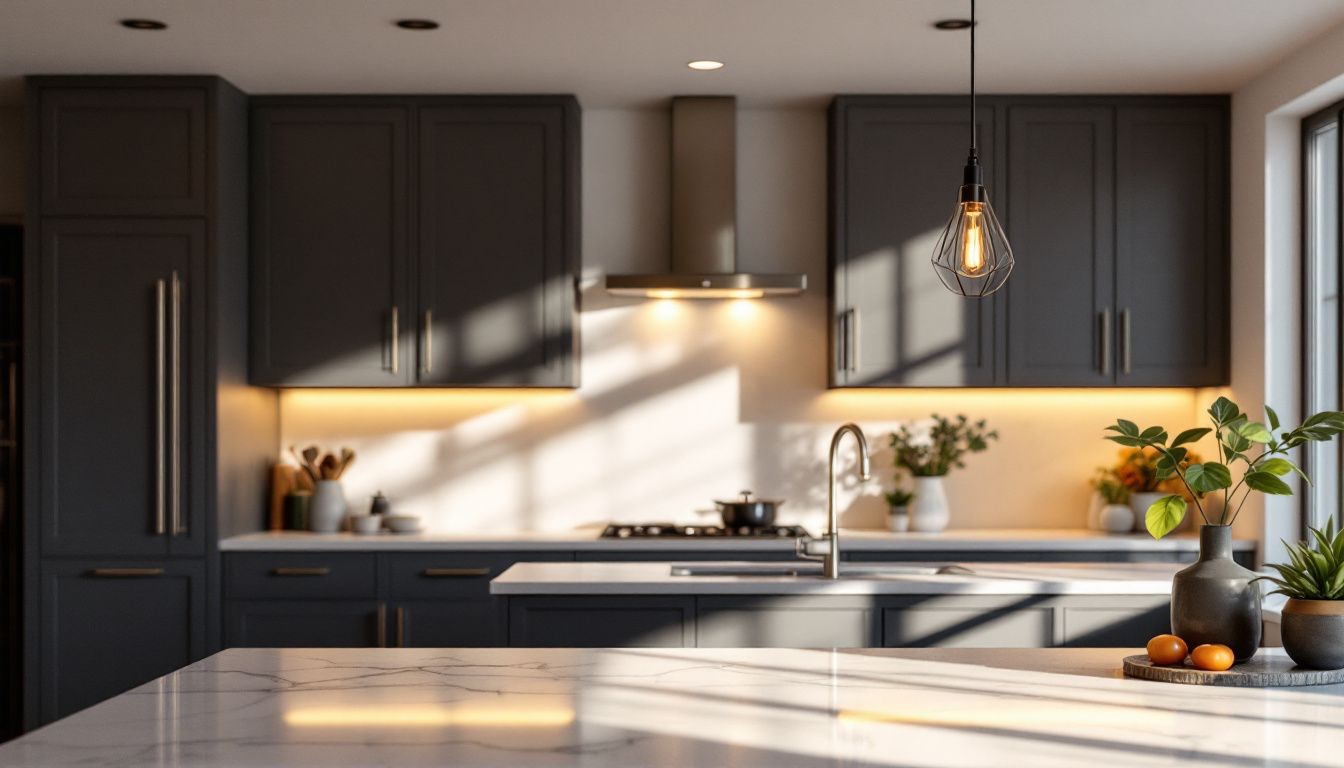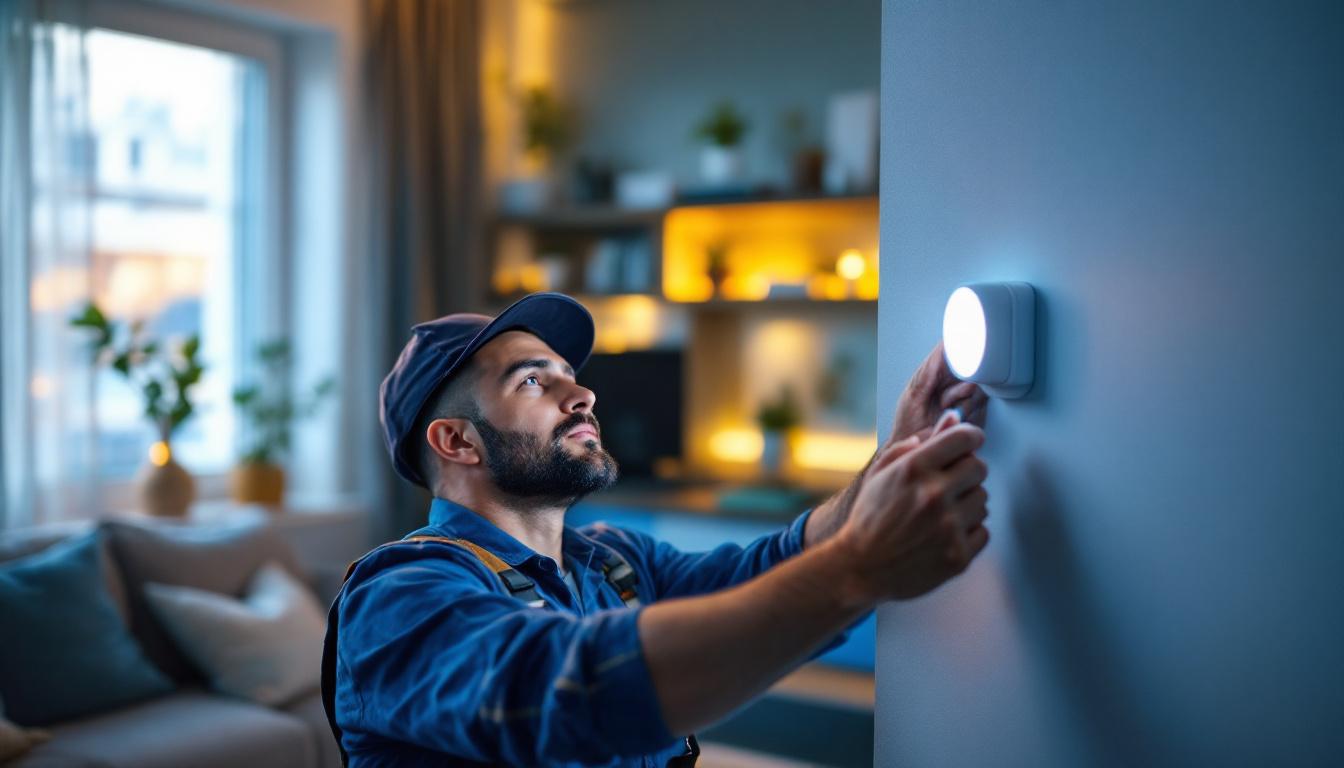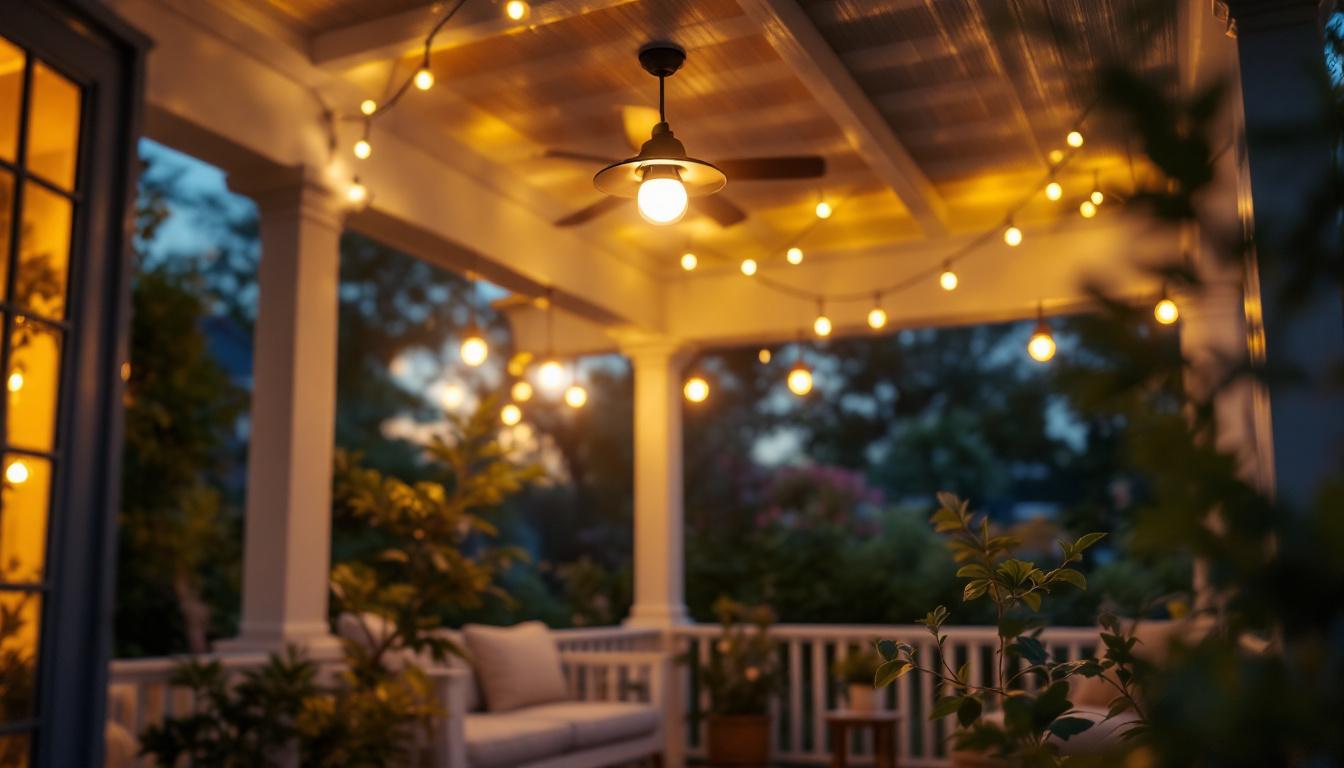
As the heart of the home, the kitchen serves multiple purposes, from cooking and dining to socializing and entertaining. A kitchen island is often the focal point of this versatile space, and the right light fixture can enhance its functionality and aesthetic appeal. However, installing kitchen island lighting can present challenges for lighting contractors. This article explores common issues that arise during the installation process and offers practical solutions to ensure a smooth experience.
Kitchen island lighting is more than just a decorative element; it plays a crucial role in the overall functionality of the kitchen. Proper lighting can illuminate work areas, create ambiance, and enhance the visual appeal of the space. For lighting contractors, understanding the significance of this aspect can help in making informed decisions during the installation process.
When selecting a light fixture for a kitchen island, contractors must consider both functionality and aesthetics. The fixture should provide adequate illumination for tasks such as chopping vegetables or reading recipes, while also complementing the kitchen’s design. A well-chosen light fixture can serve as a statement piece, drawing attention to the island and enhancing the overall decor.
Moreover, the height and placement of the fixture are critical. A fixture that is too low can obstruct views and create a cramped feeling, while one that is too high may not provide sufficient light. Lighting contractors should take measurements and consider the scale of the kitchen island to ensure the fixture is appropriately sized and positioned. Additionally, the color temperature of the bulbs used can greatly influence the mood of the kitchen; warmer tones can create a cozy atmosphere, while cooler tones can lend a more modern, vibrant feel to the space.
There are various types of light fixtures suitable for kitchen islands, including pendant lights, chandeliers, and recessed lighting. Each type has its advantages and drawbacks, and the choice often depends on the kitchen’s layout and the homeowner’s preferences.
Pendant lights, for instance, are popular for their versatility and style. They can be hung individually or in clusters, allowing for creative arrangements that suit the space. On the other hand, chandeliers can add a touch of elegance but may require more careful consideration regarding height and scale. Recessed lighting, while less visually prominent, can provide excellent ambient light and can be combined with other fixtures for a layered lighting effect. Beyond these options, it’s also worth exploring LED strip lights, which can be installed under the countertop or along the edges of the island to create a soft glow that enhances the overall ambiance while providing additional task lighting. This approach not only adds a modern touch but also improves energy efficiency, making it a popular choice for eco-conscious homeowners.
Despite the importance of kitchen island lighting, several issues can arise during the installation process. Being aware of these challenges can help lighting contractors prepare and avoid potential pitfalls.
One of the most common issues encountered is electrical compatibility. Kitchen islands often have specific electrical requirements, particularly when it comes to wattage and circuit load. Contractors must ensure that the existing wiring can support the new fixture, especially if multiple fixtures are being installed.
Before installation, it is advisable to conduct a thorough assessment of the electrical system. This includes checking the circuit breaker, wiring, and any existing fixtures. If the electrical system is outdated or insufficient, upgrades may be necessary to accommodate the new lighting. Additionally, contractors should be aware of local building codes and regulations, as these can dictate the types of fixtures that can be used and the installation methods that must be followed. Ensuring compliance not only guarantees safety but also prevents costly rework and delays.
As mentioned earlier, the height and placement of light fixtures are critical for both functionality and aesthetics. However, determining the optimal height can be challenging, especially in kitchens with varying ceiling heights or unique layouts.
To avoid issues, contractors should follow general guidelines for fixture height. For pendant lights, a common recommendation is to hang them 30 to 36 inches above the countertop. However, this may vary based on the kitchen’s design and the homeowner’s preferences. Conducting a mock-up with the fixture can help visualize the final look and ensure proper placement. Furthermore, considering the kitchen’s workflow is essential; the lighting should not only illuminate the space but also enhance the cooking and dining experience. This may involve strategically placing lights to minimize shadows and ensure even distribution of light across the island.
Another challenge contractors may face is achieving design cohesion between the light fixture and the overall kitchen decor. A fixture that clashes with the existing style can detract from the space’s visual appeal.
To avoid this issue, contractors should engage in discussions with homeowners about their design preferences and the overall theme of the kitchen. Bringing along samples or images of potential fixtures can facilitate this conversation and help ensure that the final choice aligns with the homeowner’s vision. Additionally, considering the materials and finishes of the fixtures is crucial; for instance, a sleek stainless steel fixture may complement modern appliances, while a rustic wood fixture could enhance a farmhouse-style kitchen. Collaborating with interior designers or utilizing design software can also aid in visualizing how different lighting options will integrate into the overall aesthetic, ultimately leading to a more harmonious and satisfying result for the homeowner.
To mitigate potential issues and ensure a successful installation, lighting contractors can adopt several best practices. These practices not only enhance the quality of the work but also improve client satisfaction.
Before beginning any installation, a comprehensive site assessment is essential. This involves evaluating the kitchen’s layout, existing electrical systems, and the homeowner’s specific needs. Understanding the space will allow contractors to make informed decisions about fixture selection and placement.
During the assessment, it is also beneficial to take note of any potential obstacles, such as cabinetry or appliances, that may affect the installation. This proactive approach can help prevent surprises during the installation process. Additionally, assessing the natural light sources in the kitchen can provide insight into how artificial lighting will interact with the existing environment, allowing for a more harmonious design that maximizes both aesthetics and functionality.
Effective communication with homeowners is vital throughout the installation process. Contractors should discuss the project timeline, potential challenges, and the homeowner’s expectations. Keeping the lines of communication open can help address any concerns that may arise and foster a positive working relationship.
Additionally, providing homeowners with information about the maintenance and care of the light fixtures can enhance their overall satisfaction. Educating them about bulb replacement, cleaning methods, and energy efficiency can empower them to take better care of their new lighting. It can also be beneficial to schedule a follow-up visit after the installation to ensure everything is functioning as intended and to address any questions the homeowner may have about their new system.
In today’s digital age, technology can play a significant role in the design and installation of kitchen island lighting. Utilizing design software or apps can help contractors visualize how different fixtures will look in the space. This can be particularly useful for homeowners who may struggle to envision the final result.
Moreover, incorporating smart lighting solutions can enhance the functionality of kitchen island lighting. Smart bulbs and fixtures allow homeowners to control brightness and color temperature, creating a customizable lighting experience that can adapt to various activities. Furthermore, integrating lighting with home automation systems can lead to energy savings and increased convenience, as homeowners can set schedules or control their lights remotely, ensuring their kitchen is always perfectly lit for any occasion.
Even after installation, there may be concerns that arise regarding the kitchen island light fixture. Being prepared to address these issues can further enhance the contractor’s reputation and client satisfaction.
After the installation is complete, it is a good practice for contractors to follow up with homeowners to ensure they are satisfied with the lighting. This can be an opportunity to address any concerns and provide guidance on maintenance. Offering a maintenance plan can also be beneficial, as it demonstrates a commitment to quality service.
Homeowners may have questions about bulb replacement, cleaning methods, or troubleshooting common issues. Providing them with clear instructions or resources can help them feel confident in managing their new lighting.
In the event of a malfunction or damage, contractors should be prepared to handle warranty claims or repair requests. Understanding the warranty terms for the fixtures used can streamline this process and ensure that homeowners receive the necessary support.
Establishing a clear protocol for handling repairs can also enhance contractor-client relationships. Promptly addressing any issues can demonstrate professionalism and build trust with homeowners.
Kitchen island lighting is a vital aspect of kitchen design that requires careful consideration and expertise. By understanding the importance of proper lighting, anticipating common issues, and adopting best practices, lighting contractors can ensure successful installations that meet the needs and expectations of homeowners.
Through effective communication, thorough assessments, and a commitment to quality service, contractors can navigate the complexities of kitchen island lighting with confidence. Ultimately, the right light fixture not only enhances the functionality of the kitchen but also contributes to a warm and inviting atmosphere that brings families together.
In a competitive industry, delivering exceptional results in kitchen island lighting can set contractors apart and lead to lasting client relationships. By prioritizing quality, design, and customer satisfaction, lighting contractors can thrive in this dynamic field.
Ready to elevate your kitchen island lighting installations? Choose LumenWholesale for an unparalleled selection of spec-grade lighting products at wholesale prices. Our commitment to quality and affordability ensures you have access to the best lighting solutions for your clients, without the burden of inflated costs. Plus, with free shipping on bulk orders, you can stock up on premium lighting fixtures with ease. Don’t compromise on quality or value—Wholesale Lighting at the Best Value is just a click away. Enhance your lighting projects with LumenWholesale today.

Discover how integrating LED light sensors can revolutionize your lighting business.

Discover essential insights from a seasoned lighting contractor on how to navigate common pitfalls when choosing T8 LED bulbs.

Explore the fascinating science of outdoor lighting in this insightful article tailored for lighting contractors.

Discover the essential insights lighting contractors need for outdoor ceiling porch lights.